
Hyperloop: what about the margins?
Balancing between new technologies and growing inequality
Would you like to travel from Tilburg to Amsterdam in just 12 minutes? Or go on holiday to Spain in 1,5 hours? How? The revolutionary concept of Hyperloop can make your traveling experience reach a whole new level. Here and now. In what way? That's what this article is about.
Technical innovations are the drivers of globalization. So-called “low cost” train, bus and airline companies allow relatively cheap traveling to a growing number of places. Despite this development, they are still not affordable for everyone. Unequal access is connected to both a lack of resources and the dismissal of margins on the international level of transportation. In this article, I am going to focus on the technical progress of Hyperloop One, as well as on its potential to change the growing inequality and influence the world's margins and capitals.
A new concept: Hyperloop One
Whenever we hear the word “traveling”, nice sceneries and long hours of waiting appear in mind. This can all change rapidly. Intensified flows and movements worldwide have been transforming our world and society for decades. Big companies are now in a race for primacy in technological progress, which is apt to simplify and quicken a number of cultural, economical and political flows and networks. Indeed, what we are observing now, is the result of an ongoing growth, unstoppable movement and development of the world’s systems under the conditions of globalization.
A new concept in the world of travel is ambitious enough to state that big changes are on their way. The project is called Hyperloop One, and is developed by Elon Musk, Shervin Pishevar and their team, who started working on the project in 2013. The new technology is basically expected to change the speed and the level of simplicity of traveling. It is sometimes called an “international metro”, since there are some visual similarities between the tube system and Hyperloop One. The project aims to connect different parts of the world in one broad tube system.
Figure 1: The city of the future 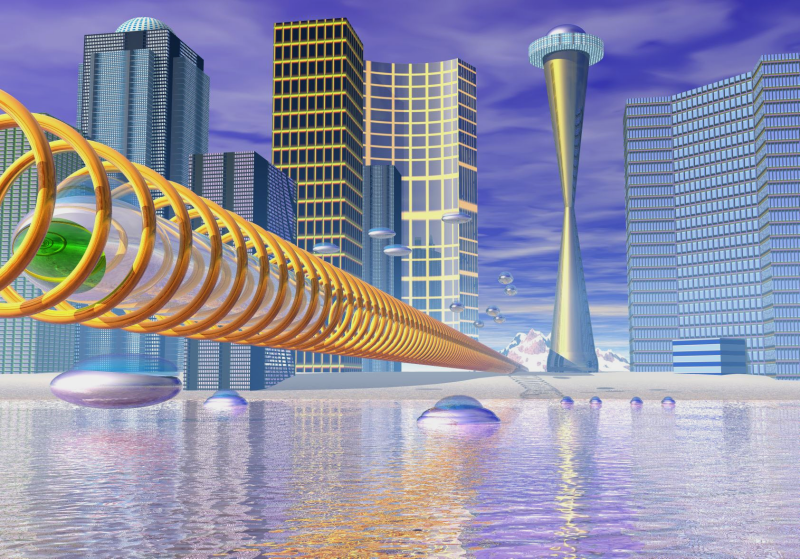
One of the key factors that keep changing with time, is the intensity of the process of globalization.
Hyperloop might indeed serve as a vivid example of the present stage of globalization, which is specific, but not unique. Moreover, it extends, intensifies and deepens the pre-existing stage. Constant movement and migration are not unique processes of our time. Before, it took months to get to a certain point on the map, e.g. for the purpose of conquering, or trade. Nowadays, not only the motives for traveling have undergone various changes, but the international transportation system has developed massively as well. "There are many simultaneous reasons for the increased net inflows. One set of [contemporary] reasons surround... [country’s] high economic performance... coupled with growing inequalities in many developing and middle-income countries (Hatton 2003)." (Vertovec, 2006, p. 5). However, one of the key factors that keep changing with time, is the intensity of the process.
Hyperloop One travels at a speed of 1100 km/h, which has never before been seen. This is made possible by its electrically working motor. The movement stimulation is also caused by the magnet routes within the massive depressurized tube system. One of the goals of the company is to make this new machinery eco-friendly - it is expected that Hyperloop One is going to use wind, as well as solar energy to keep its optimal working regime. The material Hyperloop One's tunnels are made of is a high quality steel, which is aimed at keeping the technology safe from unpredictable factors. The creators claim that the user experience going to be maximally comfortable and safe for clients.
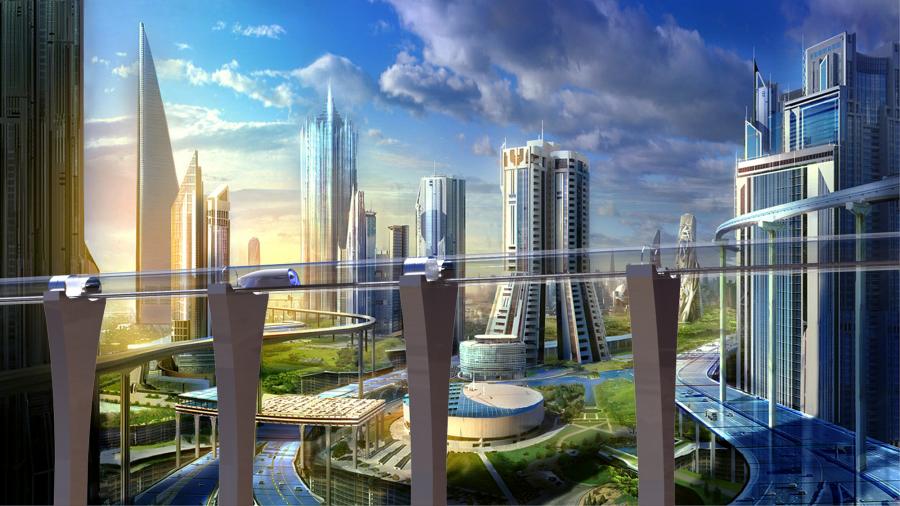
Figure 2: Futuristic Vision of Hyperloop
"Hyperloop is the first new major mode of transportation in 100 years." (hyperloop-one.com)
This new mode of transportation has already been successfully tested in the Nevada desert, and is expected to start working in 2021 in the United States. However, other countries have also shown their interest and support for Hyperloop One, among them: the United Kingdom, Canada, India, the United Arab Emirates, The Netherlands, Finland, Sweden, Mexico and others. The company, though, wants to go even further and has an ambitious vision of connecting different continents to one another. The project effectively attracts wealthy international investors, as many see the use for the technology in the contemporary world. Hyperloop One has an overall money flow of around 200 million US Dollars. More than half of this money was cash money from investors. Richard Branson and his Virgin Group have made the biggest investment so far. Thereby, Hyperloop One will soon undergo a rebranding procedure into “Virgin Hyperloop One”.
"Be anywhere. Move anything. Connect everyone"?
This new technological concept's ideology is quite promising. The product claims it will cause a never before seen shift in the traveling experience. Hyperloop One’s slogan is: "Be anywhere. Move anything. Connect everyone." They state that there has been no proper technological switch, and a brand new kind of transport that would tend to the needs of contemporary society, in around a century. “Hyperloop is the first new major mode of transportation in 100 years. It’s designed to be safe, energy efficient, and reliable. It will take you directly to your destination at speeds of up to 700 mph, above land or underground.” -The website prominently states, as well as: “On the 6th of June, 2017, Dutch Minister for Infrastructure and the Environment, Melanie Schultz van Haegen states that "in the next ten years, we will see more changes in mobility than in the last 100 years."" (Hyperloop-one, 2016). But are the loud slogans of the marketing department, used in the promotion and advertisement of the company really reflecting the truth? Are they going to allow people to move anywhere? Can they really connect everyone?
Figure 3: The slogan of the company
It is fair to say that the company has a lot of confidence in their new concept. The developers state that their goal is to build the first Hyperloop net by 2021 in the US. The nets in other countries and continents will take much longer. "Such movements do not occur in a random fashion, they are structured and conditioned, and the major condition for globalization processes is the availability and accessibility of infrastructures for globalization." (Wang et al., 2013, p. 29) Until now, they mostly focused on maps of the roads in so-called world capitals. If we take a look at the plans of these maps, we can conclude that the company has prioritized certain destinations.
Hyperloop One will first appear in so-called “First- World” Western and Middle Eastern countries.
So far, Hyperloop One actively works on its nets in the United States (at the time of writing, these nets have been the main focus of the company), Canada, UAE and Western Europe, connecting the biggest of their cities. Such "cities, consequently, are social, cultural and political laboratories where innovations appear if not first, then surely most overtly and visibly" (Wang et al., 2013, p. 26-27). This says something about the further development of the roads, as they are most likely going to pursue the goal of connecting them to each other. This is a complex overlapping between investments, counties' infrastructures and potential profits, but the concepts of the roads so far do not include the world’s margins. This new technology will definitely appear first in so-called “First-World” Western and Middle Eastern countries, before entering the stages of other countries in the Global South, whose economies are less developed.
What about the margins?
"Focusing on infrastructures in the study of globalization..., invites considerations of old and new forms of inequality between centers and peripheries, a relatively enduring aspect of the continuously changing world system. It also leads us to a precise identification of the margins: they are characterized by unequal access to infrastructures of globalization; thus, naturally, they can be located in cities as well as in the rural areas." (Wang et al. 2013, p. 29-30). Creating access to the margins, is not usually a priority for major economic investments and different kinds of world flows (economical, cultural, etc.). “The margins of the world did not appear just like that: they have histories, presents and futures. Interscale mobility is part of the presents and futures; it is vital that we manage to be specific and precise in understanding which futures it might offer.” (Wang et al., 2013, p. 38). Of course, this inequality has seen its own development throughout the years.
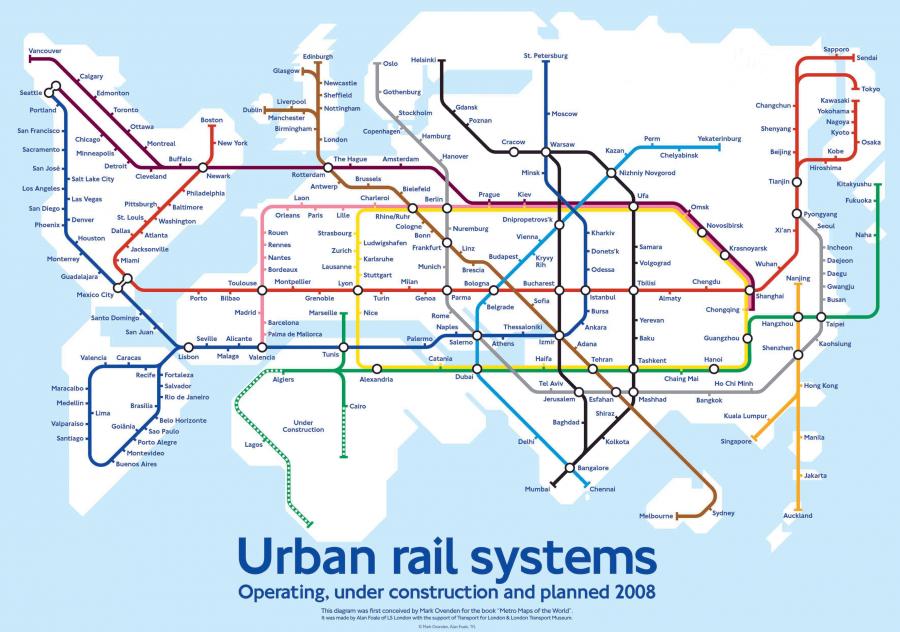
Figure 4: Urban Rail Systems. Some regions are excluded
"Cities, wherever they are, are dense concentrations of resources: of populations and of their infrastructures. Such infrastructures include governmental, administrative-bureaucratic services; economic and financial centers; layered labor, housing and commodity markets; centers of knowledge and learning such as schools and universities; hospitals, sports, culture and leisure facilities." (Wang et al., 2013, p. 26). However, it is usually not that profitable to build a great transportation system in the margins, or at least not as profitable as in the capitals. The question here is: will Hyperloop's technology take the first step into meeting the margins of the world? And will transportation be spread equally?
They still have the potential to grow into something bigger.
This is perhaps partly possible, but it would still be wise not to have too many expectations: "The distribution of such infrastructures is not necessarily democratically organized, and peripheral areas can be characterized by partial access to specific infrastructures for globalization, differing by degree from the overwhelming concentration of such infrastructures in global cities." (Wang et al., 2013, p. 29). However, India and Mexico are also on the company’s shortlist with their roads, namely in Bengaluru-Chennai, Mumbai-Chennai and Mexico City-Guadalajara. "The effects of such partial access are specific forms of practice holding a hierarchical – inferior – position relative to what happens in more central parts." (Wang et al., p. 29). Do note that even though the company attempts to reach the market of less economically developed countries, they still choose cities of 1+ million inhabitants and higher money flows than the peripheries.
Of course, there are various objective reasons why it's better to start building such a massive net from the capitals. They still have the potential to grow into something bigger, but some might also stop growing where they are now, providing further access to the technology within a significant amount of time. Essentially, one of the reasons for that is that money flows are mostly concentrated in the capitals and well-developed cities, which I mentioned above.
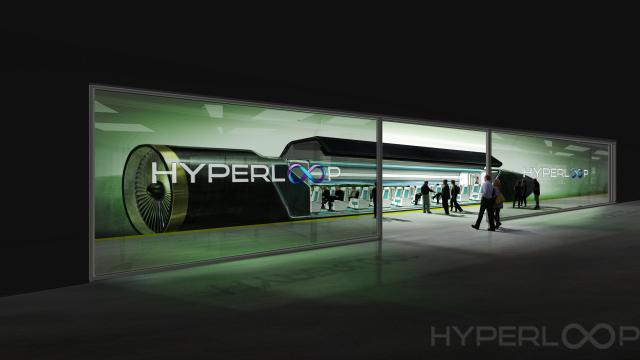
Figure 5: The concept of Hyperloop One
An elite experience
Hyperloop is presented as quite a luxurious way of transportation. We can state that this kind of transport is going to be used mostly for fast business and political meetings. This will certainly cause its price to be above average, especially when combined to its development expenses. This will cause it to only be affordable to a small percentage of people. People from the peripheries, who have a lower income than those who live in the capitals, would choose another kind of traveling. In other words, not only does Hyperloop One raise doubts about reaching the margins of Earth, but it also raises questions in terms of affordability.
A trip from Amsterdam to Barcelona would take us just 1 hrs 28 min on Hyperloop One.
Even if this concept is not going to be accessible to many, either territorially or financially, this does not mean that it will not be a game changer in the traveling and transport sphere. Hyperloop will certainly influence the prices of other modes of transport. Traveling by plane, the fastest and the most comfortable concept right now, is predicted to become less expensive. The same goes for ships, buses and trains, which can affect the increased intensity of movements worldwide. It can also cause the concurrence and broaden the reach of several transportation systems into including less economically and culturally developed areas.
Interestingly, traveling with other ways of transportation will still be a big part of our lives, as it's simpler, cheaper and, sometimes, just as fast, even after Hyperloop One's launch. However, even though the trip from Amsterdam to Barcelona would take us 1 hrs 28 min on Hyperloop instead of, almost three times longer - 4 hrs 30 min by plane, or a staggering 14 hrs 50 min by car - it is not as effective on average. A trip from Amsterdam to Thailand by plane will take just 3 hours longer, than by using the "international metro". Moreover, if you would like to use new technology for traveling from Tilburg to Breda for instance, it will take 7 minutes on Hyperloop, while it only takes twice as long if you drive the distance. In all of these cases, using Hyperloop would be the pricier alternative.
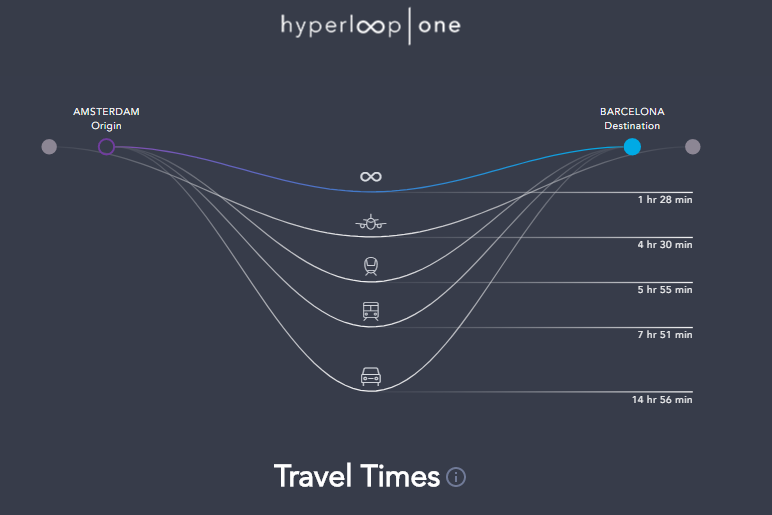
Figure 6: The length of traveling from Amsterdam to Barcelona
What about the margins?
In any case, the goal of the company is to make traveling easier, but will it also have an influence on someone who lives in a non-western country, who earns an average monthly income? The answer is “no”, but the technology does have the potential to do so in due time. Every new means of transport, before getting to the stage of everyday use, has undergone the stage of “elites only”.
Will it be spread to the margins? This seems unlikely, but India and Mexico have shown their interest in this prominent new technology, and more countries are expected to follow up. In this case it is reallyy up to the developers and whether they would like to really make their slogans come true and “connect everyone” or whether they choose to maintain a rather closed system. This also applies to the ticket prices. Only time will tell.
However, up until this point, the concept does not give us much confidence that it will be any different from other big plane/ train/ bus transportation networks - it concentrates on world capitals and presents itself as an elite business class kind of experience. So far, the increasing levels of superdiversity cause inequality to increase as well. Hyperloop is not expected to make this inequality disappear (at least not at first), but it might start a "chain reaction" - the number of processes to slightly improve the situation.
References
Hyperloop- One. (2016). Hyperloop-one/our-story. Retrieved on November 1, 2017.
Vertovec, S. (2006). The emergence of super-diversity in Britain. Centre of Migration, Policy and Society, Paper 25.
Wang, X., Spotti, M., Juffermans, K., Cornips, L., Kroon, S., & Blommaert, J. (2013). Globalization in the margins. Tilburg: Tilburg University.